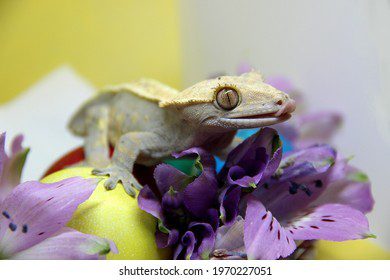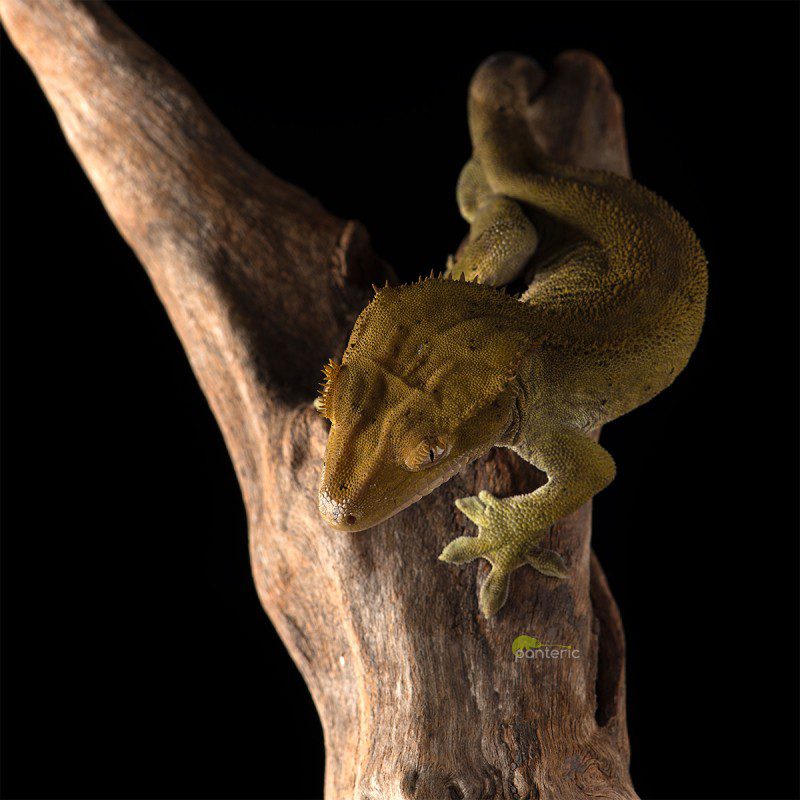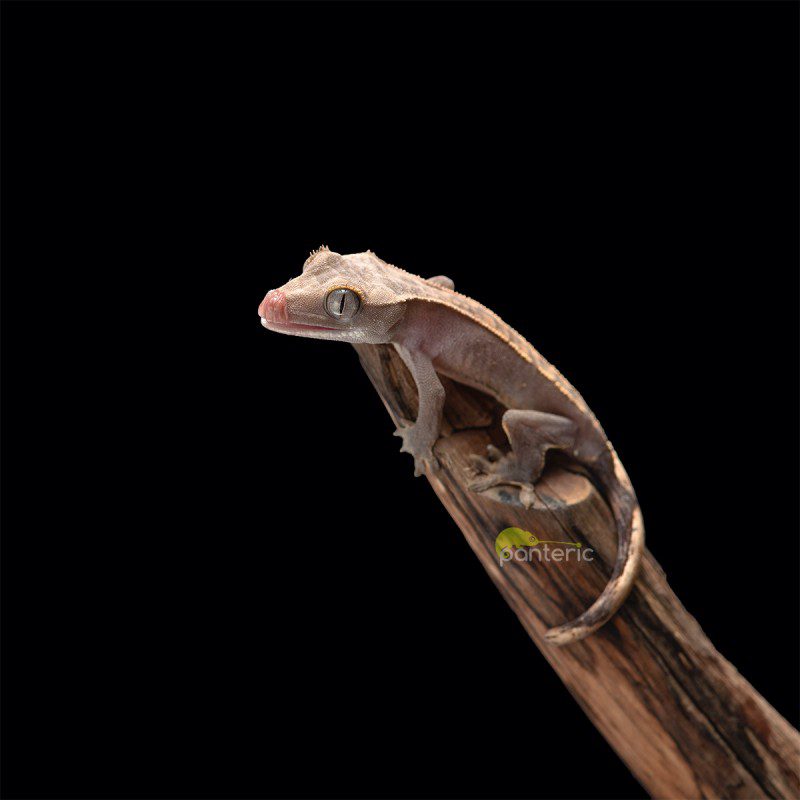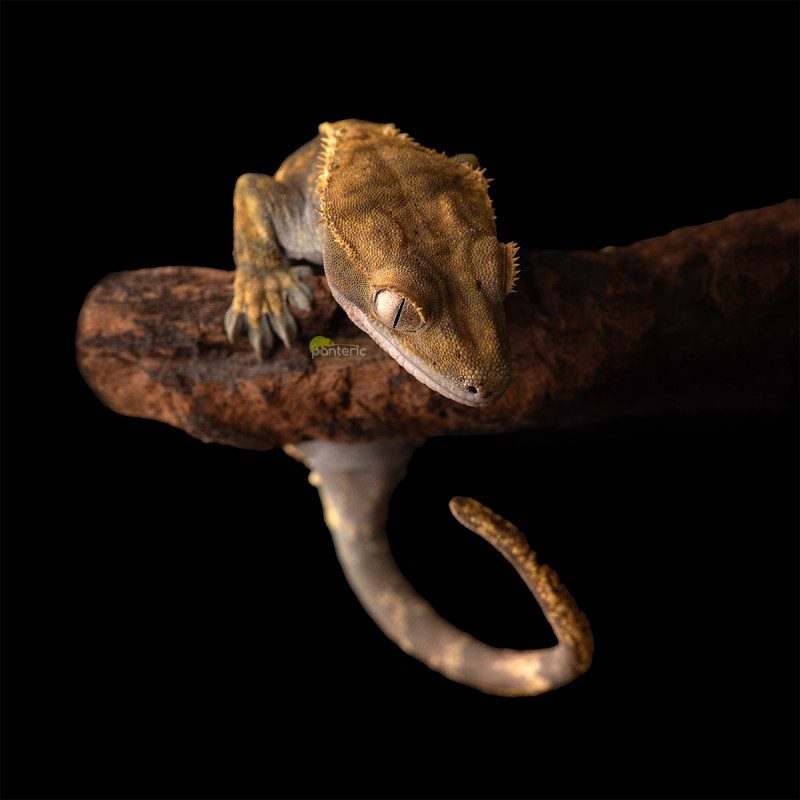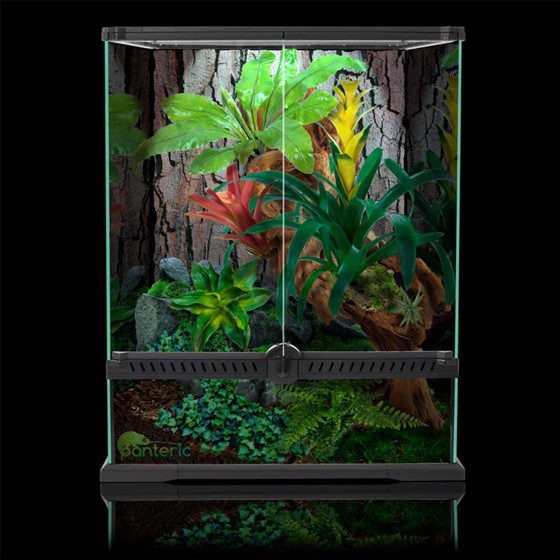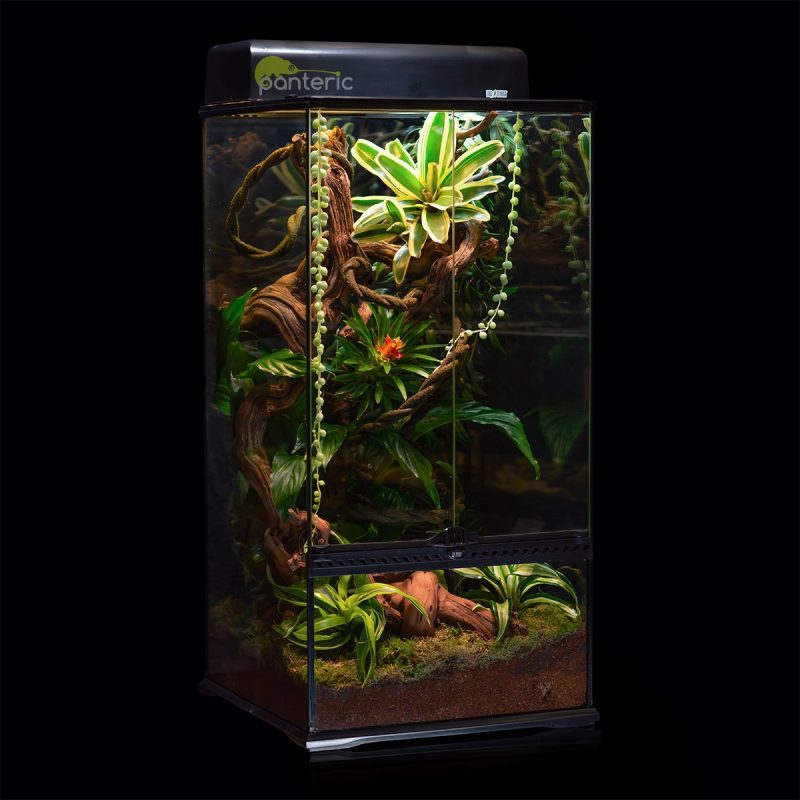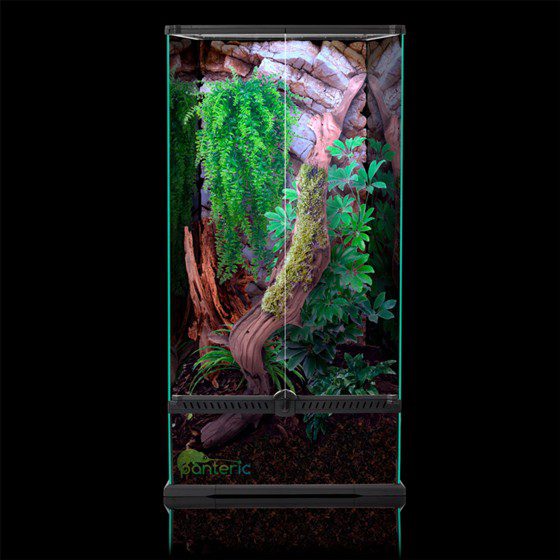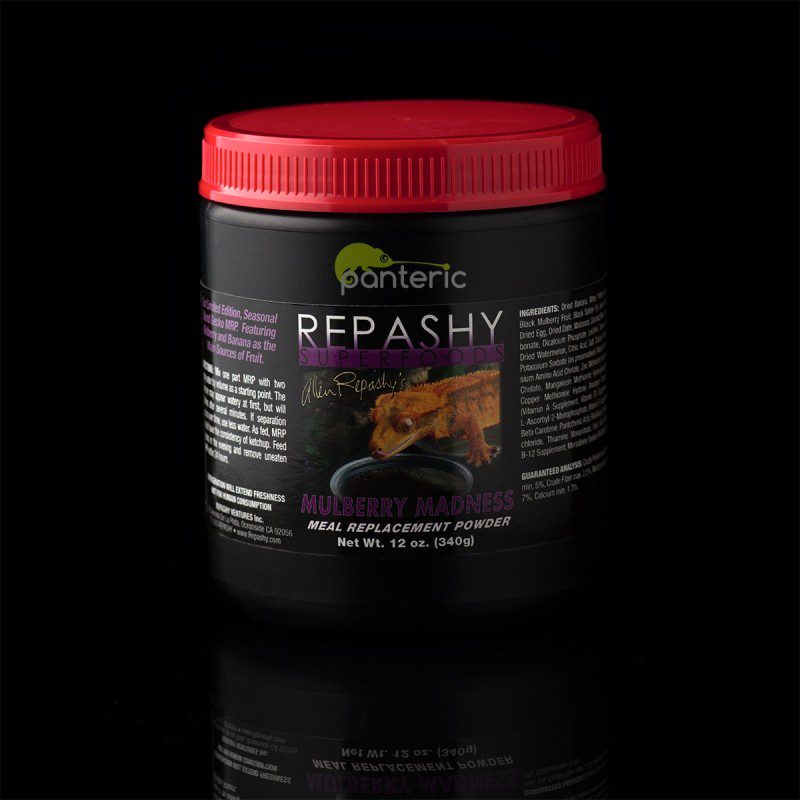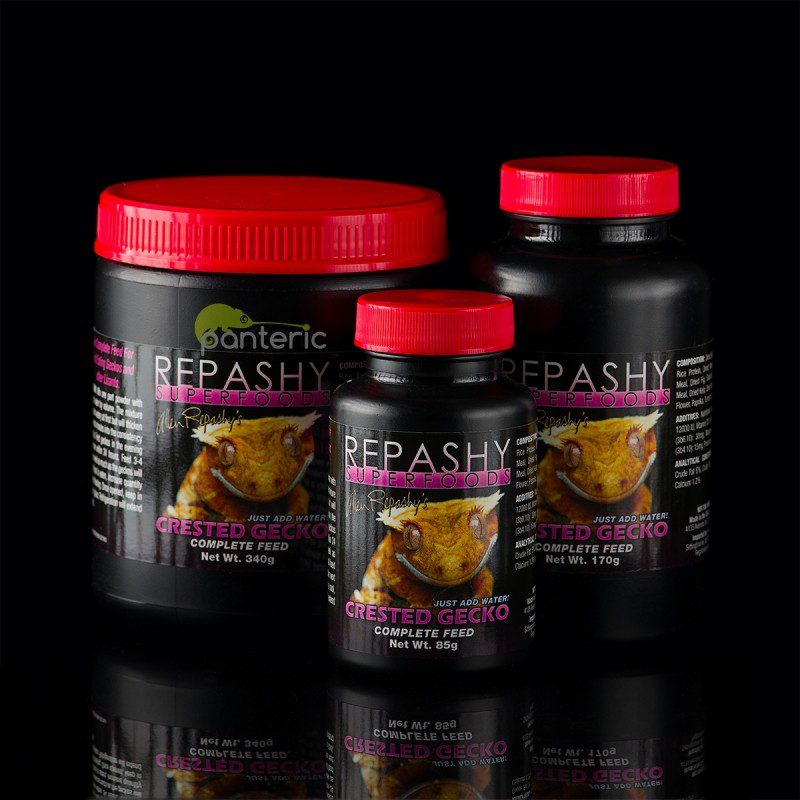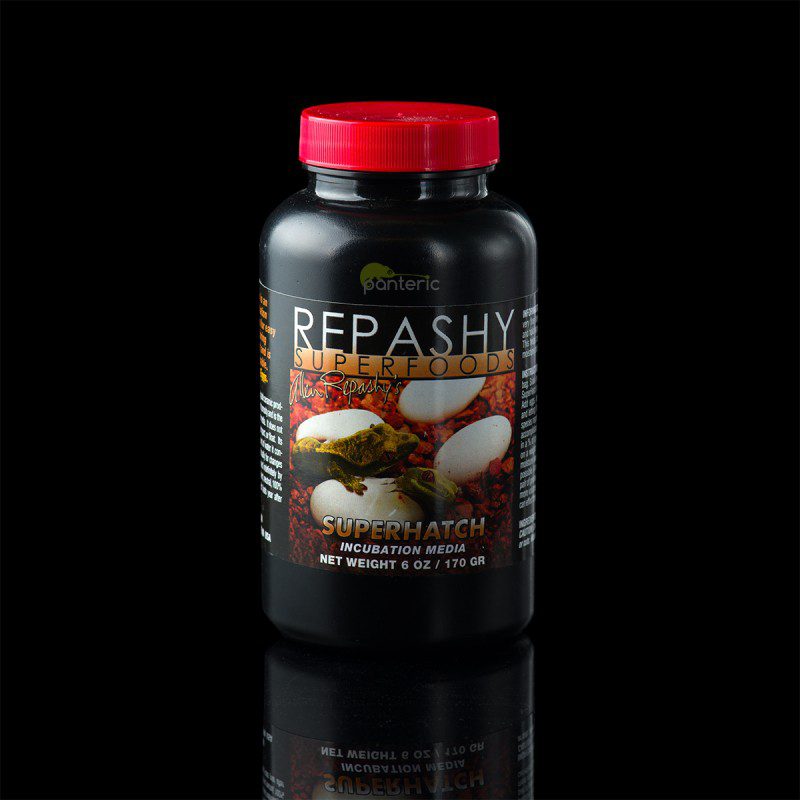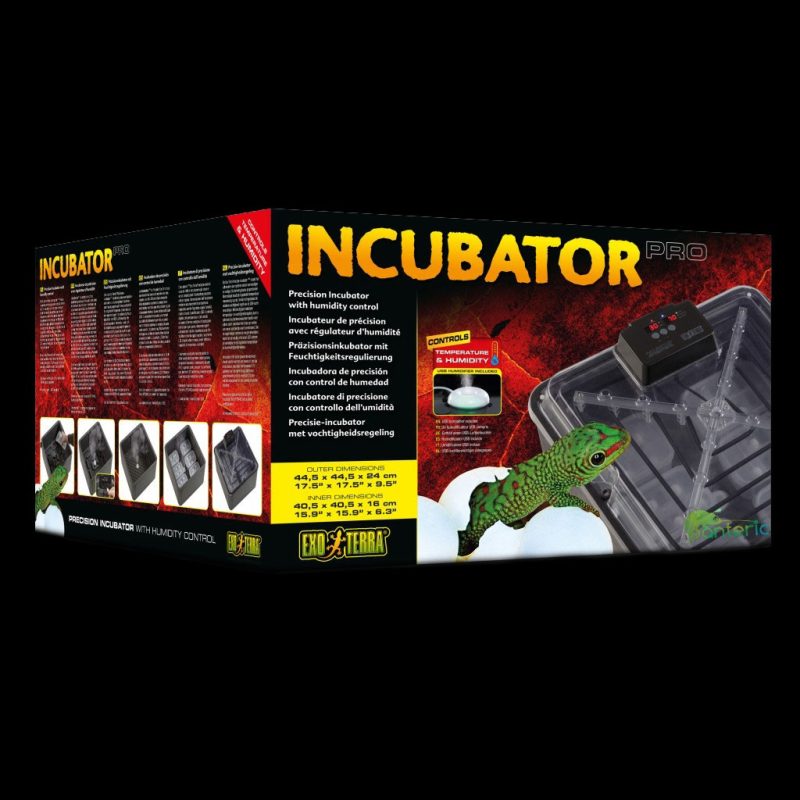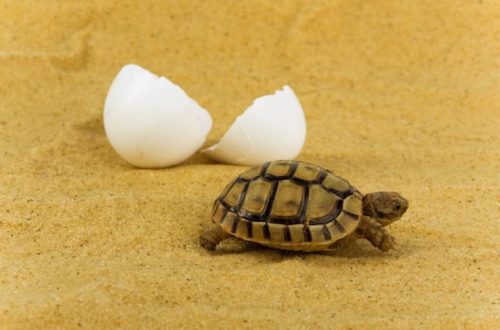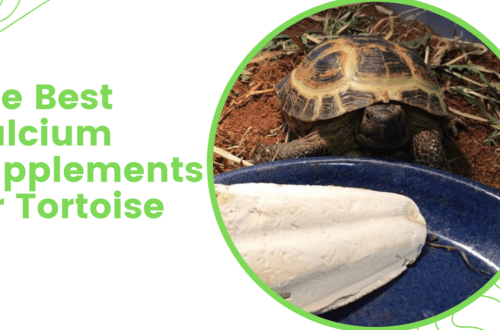To add an item to the Wishlist, you must
Login or Register
Ciliated banana-eaters have the most attractive appearance. The gecko has remarkable outgrowths around the eyes that resemble cilia. Banana-eater conquered many lovers of exotic pets with his cute muzzle. For beginners, this is an ideal reptile, it is calm and tame, and live insects can be completely excluded from the diet of the ciliated banana-eater, which is no less important when choosing a pet for many beginner terrariumists.
In this article, we will tell you how to care for a ciliated banana-eater, what to feed, how to create the right conditions for their life.
Keeping a ciliated banana-eater at home is not at all difficult.
They are small, the length of an adult gecko is 12-15 cm. Their coloration is varied. Usually yellow and red. It can be monophonic or have shapeless spots and stripes along the body.
These geckos are nocturnal. They live in tropical rainforests on the islands. Hollows, faults and cracks in the bark of trees are used as shelters.
An important difference between this gecko and some other lizards is that when a tail is lost, a new one does not grow back. This loss is not terrible, in nature most of the individuals live without it, but the pet looks more beautiful with a tail, so you should be careful when dealing with a gecko in order to preserve its beautiful tail.
Containment Equipment
- The minimum size of a terrarium for one gecko is 30x30x45 cm, for several individuals you need a larger terrarium 45x45x60 cm or 45x45x90 cm.
- The temperature during the day should be 24-28 °C. At night, the temperature should not fall below 22 °C. Heating installation is usually not required. However, if such a temperature regime is not observed in the terrarium, it is necessary to purchase special equipment. Install heating lamps or place a thermal mat.
- As a substrate, it is best to use natural natural soil: tree bark, moss. It holds moisture well and does not mold.
- Banana eaters use branches and foliage of plants as shelters. Driftwood is placed in the terrarium, scenery, live or artificial plants on which the gecko can move and hide.
- Banana eaters are nocturnal animals and there is no need to install lamps with UV radiation. But in order to create natural natural conditions, we always recommend daylight for all animals. As a source of daylight, Reptile Vision or Natural Light lamps are installed in the terrarium.
An additional installation of night lighting will be an indispensable thing, both for you and for the gecko. The Full Moon light turns on automatically when the daylight is turned off and helps geckos see in the dark, making it more fun for you to watch.
Light day in the terrarium is 8-12 hours.
- Humidity in the terrarium is maintained between 60 and 90% by misting with a spray bottle 3-6 times a day (use distilled or osmotic water to avoid build-up on the walls). Either install automatic rainfall system and then you don’t have to spray the terrarium at all. The soil in the terrarium should be slightly damp, but not wet. If necessary, additionally moisten fresh flowers, if available.
- Only use the terrarium with a proven ventilation system that promotes good air exchange and prevents the windows from fogging up.
What to feed the ciliated banana-eater?
In nature, banana-eaters feed on insects and overripe fruits. At home, they are fed insects and fruit puree or complete, balanced Repashy MRP food, which completely replaces live insects and fruits.
Before feeding, insects must be pollinated with vitamins and calcium. Feed insects with tweezers or release them into a terrarium. Do not use metal tweezers without soft tips. Bamboo tweezers are best suited for manipulating insects. For these animals, a whole line of complete feeds has been developed. Repashy MRP special powders are made from natural ingredients and have a very rich composition, the value of which is difficult to achieve by making your own fruit puree. Dilute Repashy powder as directed and offer to gecko. Additionally add vitamins and calcium to the finished mixture no need, it already has everything. They are easy to prepare and are liked by almost all geckos. You can place the finished puree in the terrarium in special hanging feeders.
Geckos drink by licking water from decorations or glass while spraying the terrarium. You can also install a special drip system Dripper Plant. Change the water in the drinker as needed.
Reproduction of ciliated banana-eaters
It’s not a complicated process. To do this, it is enough to create a group, a male and several females. This is an oviparous species. Geckos become sexually mature at 2-3 years of age. They don’t have a mating season. They can lay eggs all year round, so it is important to control this process and let the females rest and recover. During pregnancy, females should be fed abundantly and given more minerals and supplements for good egg formation. The female bears eggs for 1-2 months. For laying in the terrarium, there should be a sufficiently large layer of digging soil so that it is convenient for the female to dig a hole for eggs. Clutch contains 1-2 eggs. After the eggs are dug out and transferred to a special substrate for incubation of eggs, such a substrate does not grow moldy and holds moisture well and is transferred to incubatorwhere the eggs are incubated for approximately 55-80 days.
Life span and maintenance
In nature, banana-eaters live only 5-10 years. With proper maintenance and care, average life expectancy: 15-25 years in recreated conditions recommended by professionals.
They contain banana-eaters singly or in groups.
Diseases of banana-eaters
Like any animal, the banana-eater can get sick. Of course, subject to all the rules, the risk of disease is minimized. If you suspect any disease, call our store and we will advise you.
- If it is lethargy and lack of appetite, check the temperature in the terrarium.
- The primary signs of rickets disease (soft bones, gecko crouches on its elbows when moving), make sure that the banana eater is given all the vitamin and mineral supplements in the right doses.
- Bad molting, if you notice the remaining pieces of molting on the body, tail or fingers, then they must be removed after soaking in warm water.
Communication with a person
Banano-eaters very quickly get used to communicating with a person and calmly sit on their hands.
In the first week after the acquisition, it is worth limiting contact with the animal in order to allow it to adapt. Young individuals are advised not to disturb without reason. In order to tame, you need to feed the geckos from your hands, get them out of the terrarium for a few minutes and hold them in your arms. When the gecko realizes that you are not a danger, he will stop being afraid of you and will come out on his own. However, this cannot be guaranteed, as each animal has an individual character. If the animal is not stressed outside the terrarium, you can let him walk around the room, after closing the windows and locking other pets in separate rooms. Banana-eater should be outside the terrarium only under supervision.
On our site there are a lot of photos of the Ciliated banana-eaters, as well as a video, after watching which, you will get acquainted with the habits of reptiles.
Panteric Pet Shop supplies only healthy animals, helps with the selection of everything you need for terrarium equipment. Our consultants answer all your questions, give important advice on care and breeding. For the time of departure, you can leave your pet in our hotel, which will be monitored by experienced veterinarians.
Eublefars or leopard geckos are ideal for both beginners and experienced terrarium keepers. Learn how to improve the life of a reptile at home.
We will tell you how to properly equip the terrarium, organize the nutrition of the maize snake and communicate with the pet.
Many hobbyists choose to keep a short-tailed python. Find out how to properly care for him at home.
